When renting a property, having a clear and concise rental agreement is crucial. One type of rental contract that is commonly used is a short-term lease agreement. This type of agreement allows a tenant to rent a property for a limited period, usually less than a year.
The purpose of a short-term lease agreement is to clarify the terms and conditions of the rental, and to ensure that both parties understand what is expected of them.
What is a Short-Term Lease Agreement?
A short-term lease agreement is a rental contract that can be easily printed and filled out by both the landlord and the tenant.
This type of agreement outlines the specific terms and conditions of the rental, including the duration of the lease, the amount of rent to be paid, and any other rules or regulations that both parties need to abide by.
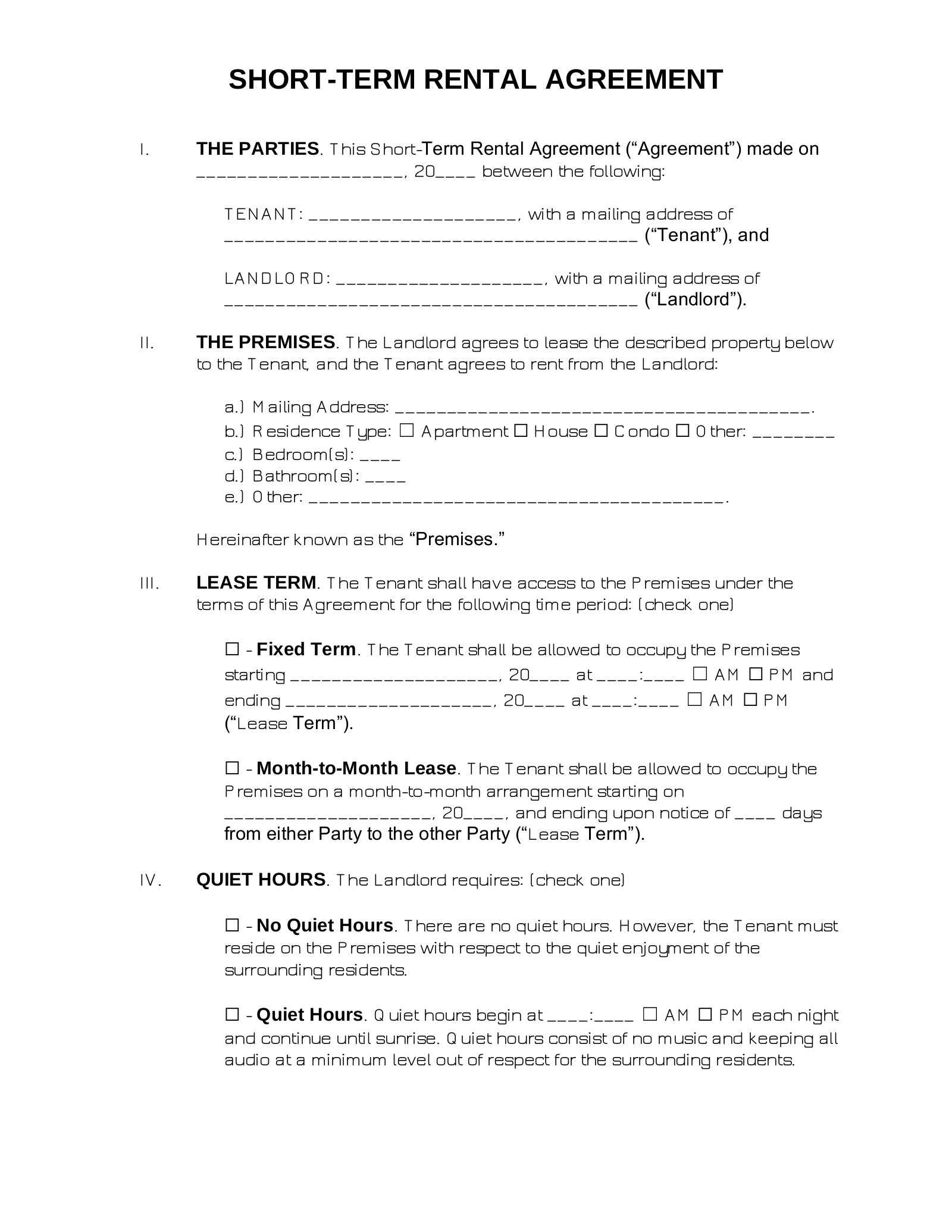
Why Use a Short-Term Lease Agreement?
There are several reasons why using a short-term lease agreement can be beneficial for both landlords and tenants:
- Flexibility: Short-term lease agreements provide flexibility for both the landlord and the tenant. The tenant has the option to rent the property for a shorter period, which is ideal for individuals who are unsure of their long-term plans or are only in need of temporary housing. Landlords can also benefit from short-term leases as they allow them to have more control over their property and have the ability to make changes or updates more frequently.
- Clear Expectations: A short-term lease agreement ensures that both parties have a clear understanding of what is expected of them. It outlines the rules and regulations that need to be followed, such as noise restrictions, pet policies, and maintenance responsibilities. This helps to avoid any misunderstandings or disputes that may arise during the rental period.
- Easier Termination: With a short-term lease agreement, it is often easier for both parties to terminate the rental contract if needed. This can be beneficial if the tenant needs to move out earlier than expected or if the landlord needs to regain possession of the property. Having a clear termination clause in the agreement can help to minimize any potential conflicts.
- Legal Protection: Using a short-term lease agreement provides legal protection for both the landlord and the tenant. It ensures that both parties are aware of their rights and responsibilities, and it can be used as evidence in case of any disputes or legal issues that may arise during the rental period.
How to Create a Short-Term Lease Agreement
Creating a short-term lease agreement is a simple process that can be done by following these steps:
- Gather Information: Start by gathering all the necessary information for the lease agreement, including the names and contact information of both the landlord and the tenant, the property address, and the duration of the lease.
- Include Key Terms: Clearly outline the key terms of the rental agreement, such as the monthly rent amount, the due date for rent payment, and any security deposit or pet fees that may apply.
- Specify Rules and Regulations: Include any rules and regulations that both parties need to follow, such as noise restrictions, smoking policies, and maintenance responsibilities.
- Add Termination Clause: Include a termination clause that outlines the process for terminating the lease agreement, including any notice periods required.
- Review and Sign: Review the lease agreement with the tenant and make sure that both parties understand and agree to the terms. Sign the agreement and provide copies to both the landlord and the tenant.
Examples
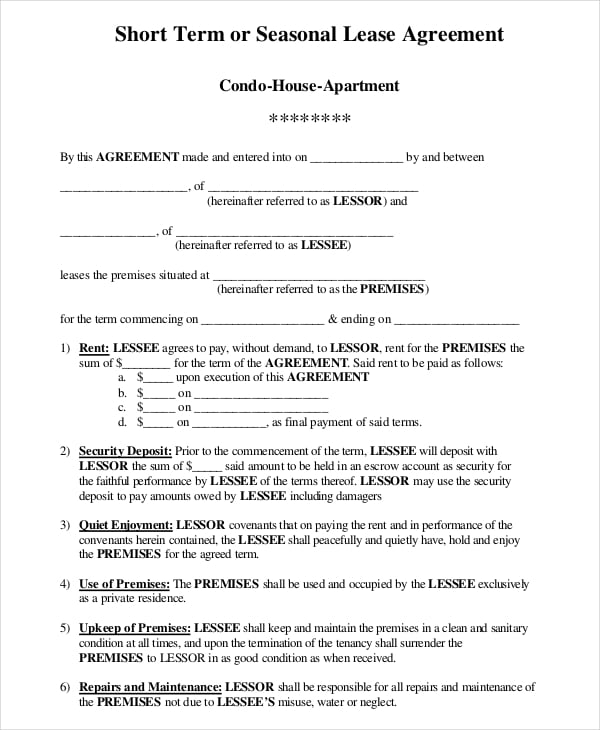
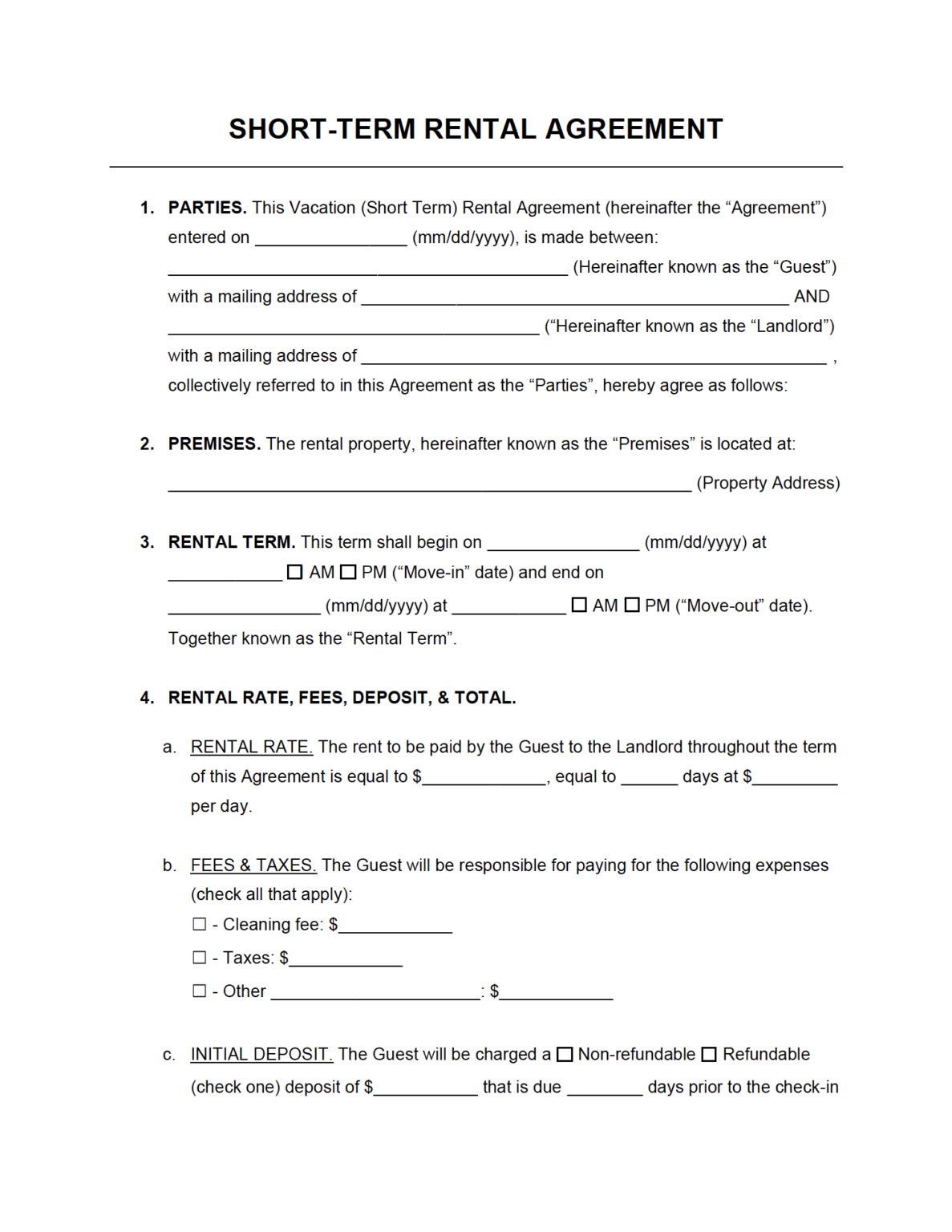
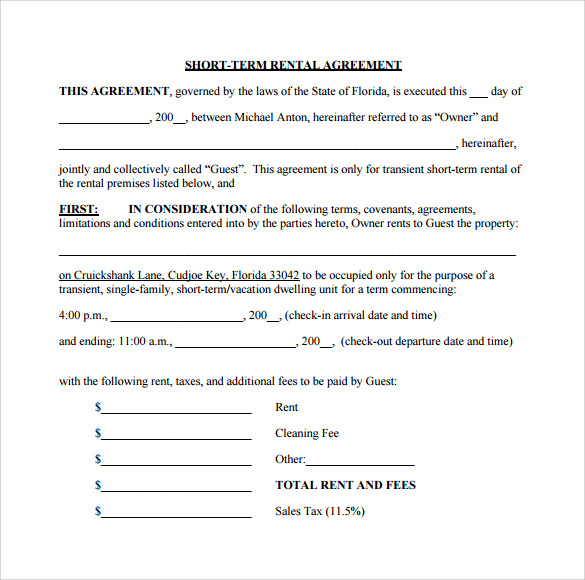
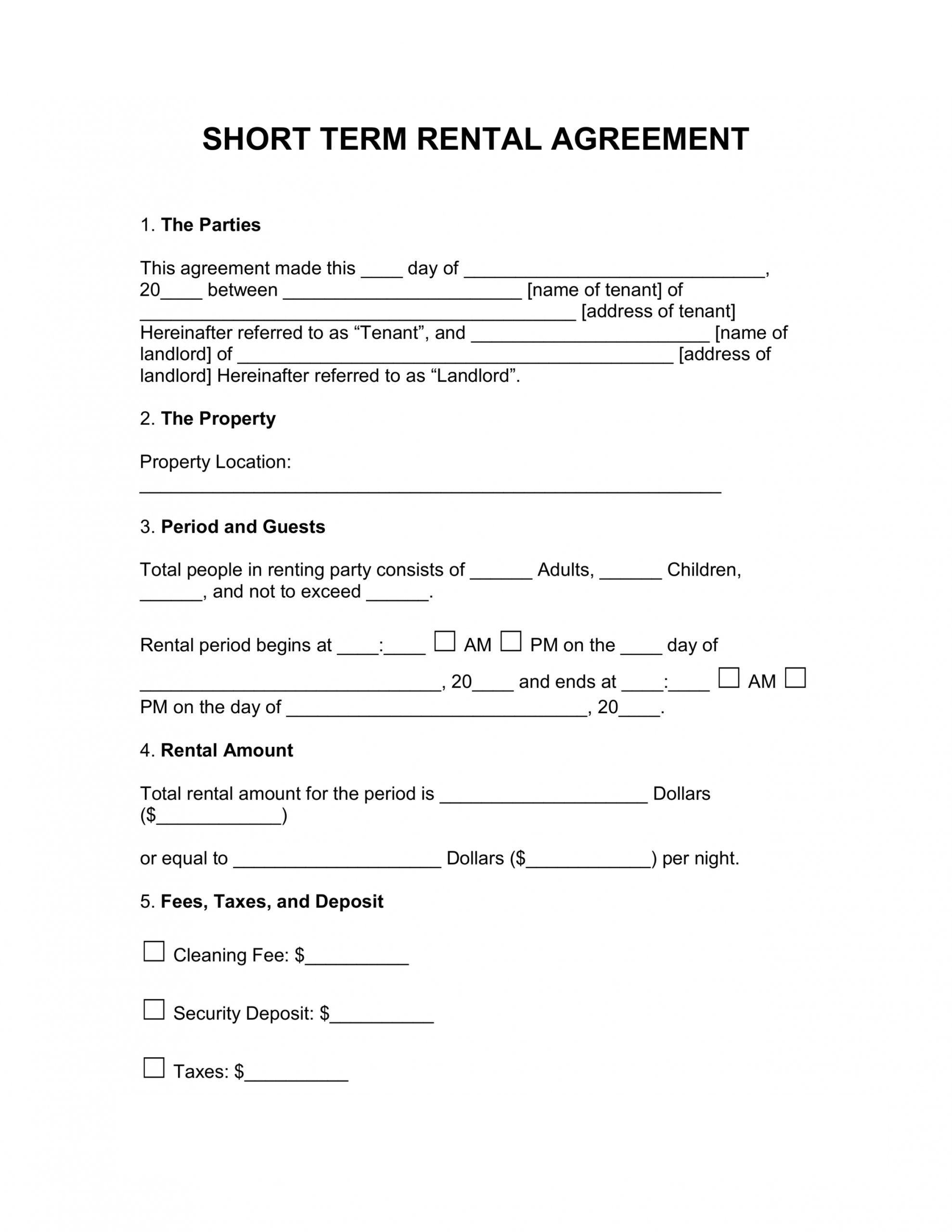
Tips for Successful Short-Term Rentals
Here are some tips to help ensure a successful short-term rental experience:
- Communication: Maintain open and clear communication with the tenant throughout the rental period. Address any concerns or issues promptly to avoid any misunderstandings.
- Regular Inspections: Conduct regular inspections of the property to ensure that it is being well-maintained. Address any damages or repairs as soon as possible.
- Document Everything: Keep detailed records of all communications, inspections, and repairs. This will be helpful in case of any disputes or legal issues.
- Screen Tenants: Take the time to thoroughly screen potential tenants to ensure that they are reliable and responsible. This can help to avoid any problems during the rental period.
- Be Flexible: As a landlord, be willing to be flexible with your tenants when necessary. This can help to build a positive relationship and encourage them to adhere to the terms of the lease agreement.
- Know the Laws: Familiarize yourself with the local rental laws and regulations to ensure that you comply with all legal requirements.
In Conclusion
Using a short-term lease agreement can provide numerous benefits for both landlords and tenants. It helps to establish clear expectations, provides legal protection, and allows for flexibility in renting arrangements.
By following the steps outlined above and incorporating the tips for successful short-term rentals, both parties can have a positive and hassle-free rental experience.
Short-Term Lease Agreement Template – Download